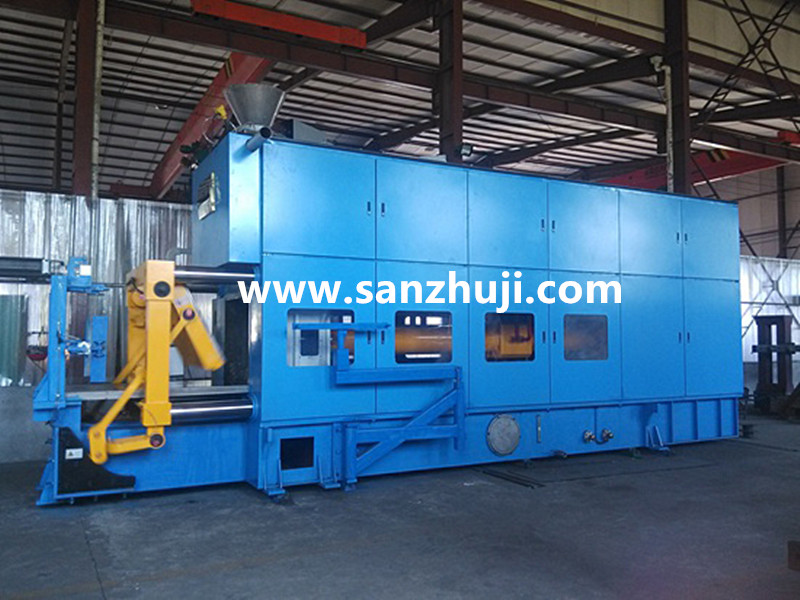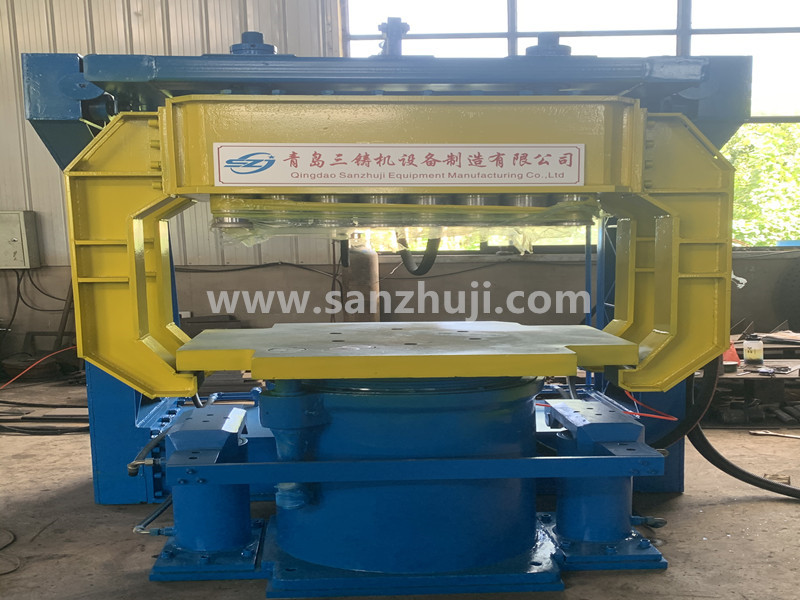Part with the improvement of casting and precision casting, precision casting are melting casting, sand casting and investment casting compared with clay resin sand casting, casting precision and quality are excellent, sanzhuji after 10 years of experience, will melt casting process detailed summary, hope to be of any help to the foundry enterprises, welcome to visit our company
With the lost foam technology, products are poured using foam models. The foam model is embedded in a molding box in loose sand, which is compacted by vibration. Liquid metal is then poured onto the foam via a pouring funnel. The foam model gasses under the influence of the high temperature. Once the metal has solidified, the product can easily be removed from the molding box. With the lost foam technology it is in principle possible to pour very complex products in one go, because the foam model can be built up from different parts. However, a new foam model is required for each product.
Foam model production consists of the following two steps:
Pre-expanding raw material granules into foam granules
Forming a foam model using the pre-expanded foam granules as raw material.
The pre-expansion is necessary to obtain foam granules with a lower density and an equal size. The foam model is formed in a mold. The mold cavity of the mold is first completely filled with foam granules, after which steam is blown into the mold. Due to the increase in temperature, the grains soften and expand and form a solid structure. After the model is formed, it can cool and be ejected. Immediately after ejection, the foam model expands due to the absorption of air. After some time the foam model will shrink again as a result of evaporation of pentane and water. This shrinkage can be controlled by artificially aging the foam model in an oven. The correct parameters can minimize post-expansion after aging.
It is often easier to build a foam model from parts, because these can be produced more easily. The joining of these parts must be done accurately in order not to influence the dimensions of the complete model. The models are usually connected with glue. The adhesive must seal the joint gap so that no coating can penetrate during the coating of the foam model. In addition, as little glue as possible must be used, so that as little residue as possible remains after gasification of the foam model in the molding box.
When the foam model is ready, the casting system can be mounted on the model. Depending on the size of the foam models and the mold boxes, the foam models are bundled into a cluster. This way, several copies can be cast in one go.
Then a coating is applied to the foam model, it has the following functions:
The coating gives rigidity to the foam model so that the chance of deformation during embedding is minimized.
The relatively hard layer prevents the sand from burning during the casting of the metal.
The coating influences the speed at which the liquid metal takes the place of the foam because the decomposition products (gases) from the foam model must escape through the permeable coating. The coating consists of a ceramic powder with binder dissolved in water. The coating can be applied by dipping, spraying or pouring over the foam model. The layer thickness of the coating should be as equal as possible to keep the permeability the same at every point of the foam model. After application, the coated foam model is dried in an oven.
The coated foam model is provided with a pouring funnel and placed in a molding box. The cupboard is filled with sand. During filling, the sand is compacted with a vibrating table, so that all cavities of the foam model are also filled. The degree of filling and the filling method determine the degree to which the foam model deforms or not. Pouring in the metal is a critical process. An automated casting process prevents variations in casting speeds. The funnel must always remain filled with liquid metal during pouring. As a result, there is sufficient pressure of the metal on the sand in the molding box and the sand mold cannot collapse.
For a good lost foam casting it is a requirement that the coating, the sand, the pouring point and the casting speed are precisely matched to each other. After casting, the casting cools down in the molding box. Shaking out the cooled casting from the unbound sand is easy and the sand can be fully reused. There is hardly any need to clean the casting, because the coating adheres to the product like a loose shell and falls off when touched. The casting system can be removed and the castings can be reworked.
Advantages of foam molding:
Complicated castings can be cast in one piece, because the foam model can be built from different parts.
The ratio between the volume and the weight of the casting is optimal due to the virtually absence of discharges.
Because no binder is used, the sand is easy to reuse.
The transition from thick to thin is no problem.
The casting process is hardly harmful to the environment.
The mold for the foam models has a long service life.
The material structure of the casting is homogeneous due to laminar metal flow.
Little post-processing of the Lost Foam casting is required because the molding box has no dividing seams.
Disadvantages of foam molding:
The quality of the casting depends on the quality of the foam model.
The surface quality is directly dependent on the surface of the foam model.
Complicated shapes often require a composite model.
The foam models are easily damaged.
The minimum wall thickness of a foam model is 3 mm.
The models are subject to (predictable) shrinkage.
To address these drawbacks, Sanzhuji suggests that action could be taken:
Scope of application solves foam molding:
Products that require many cores in sand casting;
Products that require a lot of finishing with other casting methods;
Products with many internal cavities;
Products of which the separate parts can be combined into a casting;
Products to which the Lost Foam process can provide added value.
We are in The West Coast New District of Qingdao, looking forward to your arrival
Qingdao Sanzhuji Equipment Manufacturing Co., Ltd. specializes in the production of sand reclamation equipment,foundry machines,Sand casting equipment,GS high efficiency rotary mixer,no-bake resin sand mixer,Jolt squeeze molding machine/Jolt-squeezing moulding machines,Multi- Piston Moulding Machine/Hydraulic multi-piston moulding machine,foundry molding machine,flaskless moulding machine,shot blasting machine,dust collector,according to the amount of old sand recovered Carry out plan customization, and provide sand reclamation equipment installation, commissioning, and training. Welcome guests to visit the factory.








